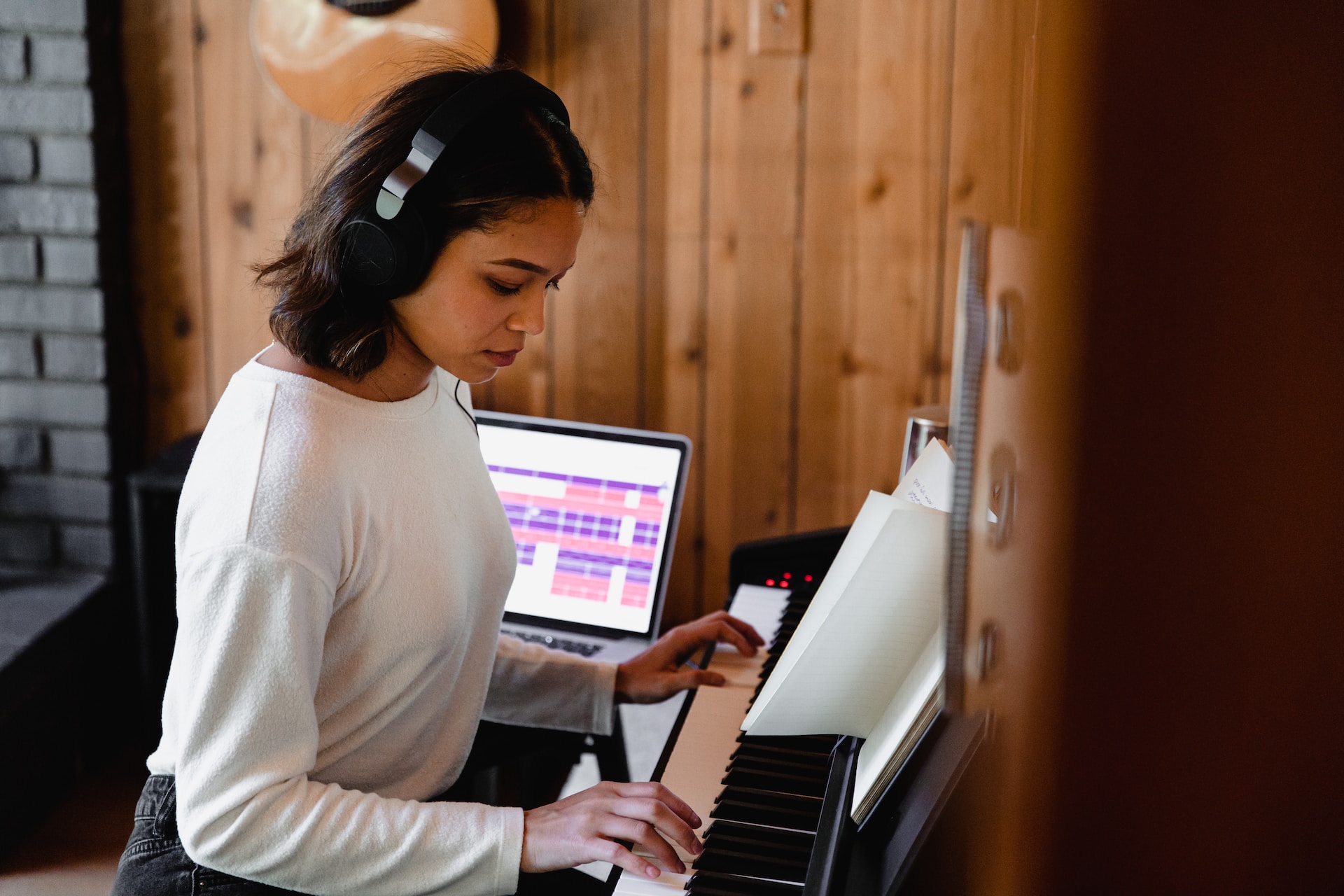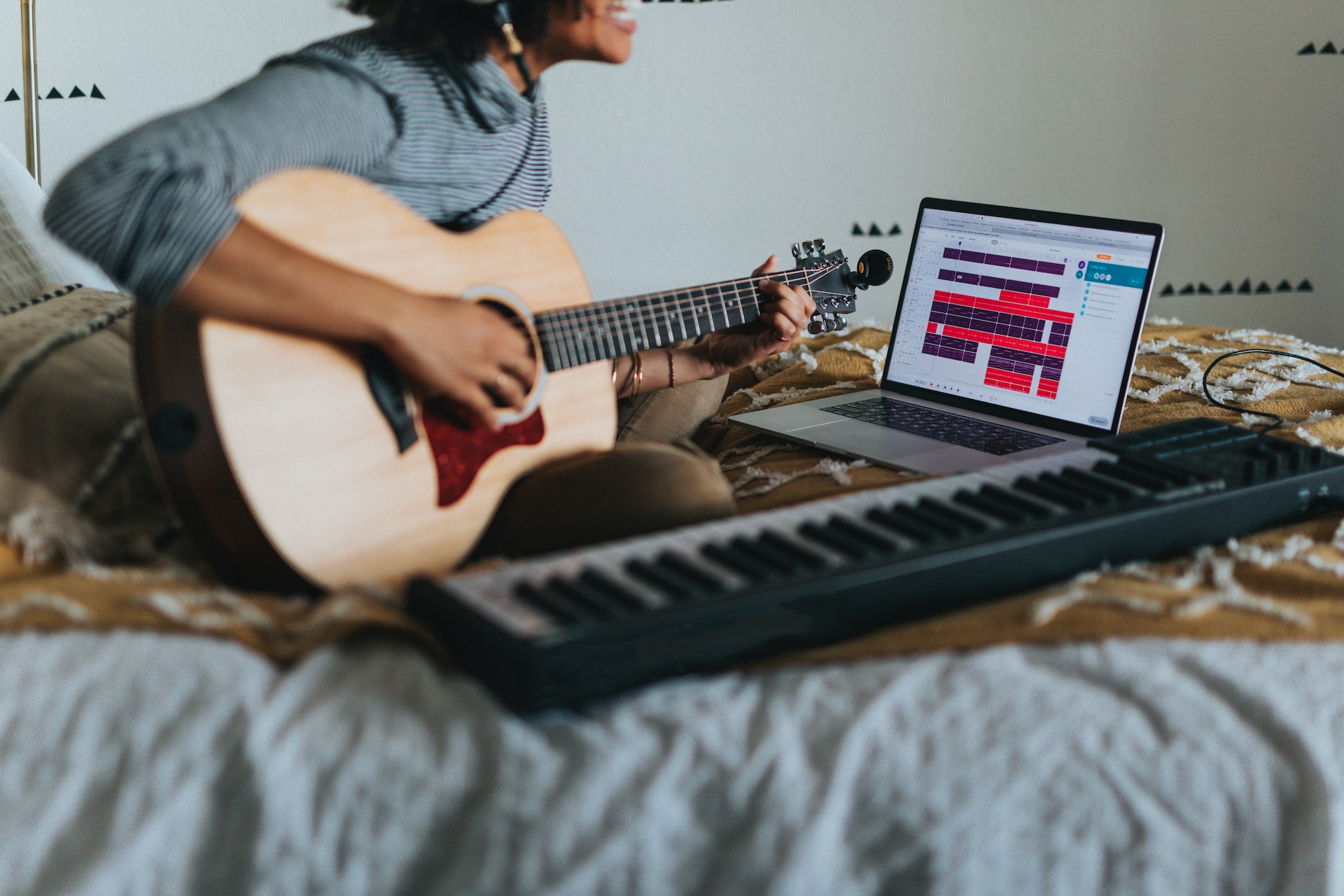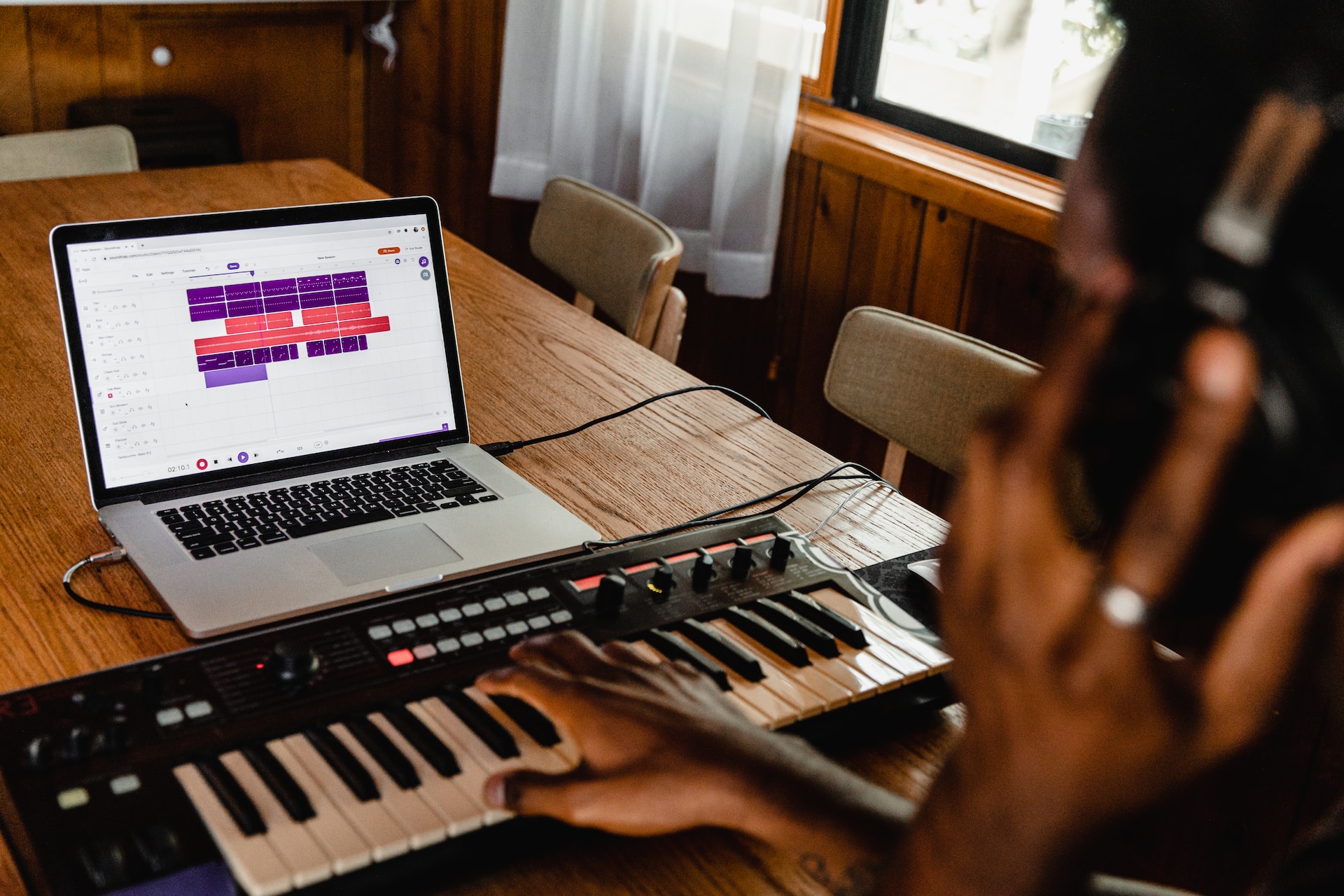Vinyl records and CDs have largely been taken over by streaming music, but the industry continues to grow rapidly. In 2022, the music industry earned a staggering $15.9 billion in the United States. Music streaming accounts for 65% of recorded music industry revenue worldwide, and approximately 82.2 million Americans have at least one paid music streaming subscription.
Table of Contents
- Developing a music production setup at home
- The impact of high-speed Internet and virtual music production
- Future trends for home virtual music production using high-speed internet
- Overcoming the challenges of virtual music production
Developing a music production setup at home
In decades past, artists had to go to a recording studio to make, record, and produce/mix their albums. Producers used mixing boards and other forms of manual equipment to mix tracks and create a sound worthy enough to put on an album. Today, a variety of home music technology developments allow people to create, produce, and sell their music from home. Even if you don’t have or can’t afford standard equipment, internet-based music production software, a good internet connection, and even a smartphone can make music production easier and more streamlined than ever before.
Access to music production tools and software is more possible than ever, making it fun and easy for musicians and producers to create a solid sound in their homes. Here are some examples of music production tools and software that can be used to create a variety of sounds for every genre, from country and R&B to rock and roll and hip-hop:
- Digital audio workstations: These hubs are essential for digital music production and allow you to accomplish a wide range of music production tasks. Digital audio workstations simplify editing and mixing and can be supplemented with additional software products and plug-ins. The workstation records audio data like vocals and instruments and then converts them into a digital format. Producers may then manipulate the data on a computer by cutting, rearranging, or altering sounds of songs or simple sections of a song.
- Recording software: This crucial software produces a high-quality recording that results in a crisp, quality rendition of a performance. Once the song is recorded, home music producers can control the format and file size to later adapt using other remote music mixing tools.
- Editing software: This vital phase is essential to quality virtual music production. The raw audio files can be arranged and altered to create the finished product, and you can manipulate recordings and adjust them as needed. Producers can also add music files to a range of different channels so they can be cut independently and listened to both alone and combined with other files or tracks.
- Publishing software: Once the music is ready for the public to hear, publishing software allows you to release the music to accessible networks. It automatically uploads your songs onto streaming services and databases, making the entire process easier. This software may also help you through the copywriting process by storing information about each song – like the contributors, rights holders, and other key players – to protect intellectual property when the music is officially published.
Additionally, when diving into the world of music production, having access to a diverse and extensive sound library can significantly elevate your creative endeavors. Many software options, like Apple GarageBand, come with built-in sound libraries like Apple Loops, which offer a vast array of pre-recorded music snippets and samples. These sound libraries encompass a wide range of instruments, rhythms, and genres, providing an invaluable resource for novice producers to experiment with different sounds and styles. As you continue to develop your skills, you may also explore third-party sound libraries, like Kontakt libraries, and sample packs, which offer even more sonic possibilities, allowing you to craft unique and compelling compositions. These libraries, often available online, are an essential part of a producer’s toolkit, serving as a wellspring of inspiration and creativity.

The impact of high-speed Internet and virtual music production
The production tools and software mentioned above are just some of the many technologically advanced tools that home music producers have in their arsenal. High-speed internet access encourages a smooth, collaborative virtual music production process in the following ways:
- A quality internet connection improves and encourages collaboration among artists. Share files, record audio tracks, and then bring them together to create a unified track that can be published online or sent to record labels for consideration. This allows for real-time virtual sessions and remote collaboration on projects so several artists and producers can communicate at once. It also makes it easier for artists to virtually record their part of a song or album simultaneously with other artists. You no longer need to physically go to a music studio in order to work together to develop a song.
- The internet makes it easier to get access to a variety of online resources and tutorials. Virtual courses teach music producers how to do everything from using different types of software to promoting and marketing their work. The variety of skill development allows musicians and producers to keep up with industry trends to ensure they stay relevant in the space.
- High-speed internet makes the distribution and sharing of music extremely easy. Both streaming and digital platforms allow musicians to distribute their music to a much wider audience, including globally. Social media also helps artists spread the word about their music to people all over the globe to encourage excitement and engagement.
Future trends for home virtual music production using high-speed internet
Trends in entertainment are constantly changing. The integration of high-speed internet for virtual music production is adapting to these trends by consistently adding new features and new developments. The development of AI (artificial intelligence) is quickly transforming the traditional ways that musicians and producers make their products. Here are a few ways these new trends are changing the way people produce music online:
- Virtual reality allows producers and artists to enjoy a more immersive and realistic experience when creating music. For example, KORG Gadget is a new software featuring powerful instruments and an intuitive user interface that promotes faster music production in a new 3D, virtual reality-based space. You’re able to control gadgets arranged in a 360-degree format as if they were physically surrounding you in a traditional studio. Users simply need a VR headset compatible with the software, and they can begin using it right away to record, mix, cut, and perform other functions.
- AI is now assisting artists with music composition and production. If a musician is having writer’s block, they can use AI systems like ChatGPT to help them develop an outline or fill in missing details of a song. Writing prompts help producers and artists come up with creative lyrics. AI vocalist plugins can take those lyrics and perform them so the artists can better understand how they’ll sound before they actually record. New AI mixing and mastering tools are helping to make home music mixing easier by applying the appropriate mixing choices in seconds. This may help reduce the amount of time it takes to finish a song before it goes to market.
- Ever-evolving music platforms and music distribution methods are breaking down the barriers of the past. Faster, easier access to music allows artists to reach new audiences all over the globe at a record pace. Aside from streaming platforms, social media allows artists to actually connect with their audiences on a more personal level. The days of getting signed to a major label are becoming less relevant, as more independent artists can simply create music, distribute it via streaming platforms and other means, and gain fans without requiring the “middleman” or having to commit to tedious contracts. This simple development and fast-growing trend is paving the way for more creativity in the music world.

Overcoming the challenges of virtual music production
While home music and virtual music production help simplify creative work and music development, there are some challenges you’ll need to face and overcome. Cybercriminals and hackers can take unfinished (and finished) music files and sell them for profit to unsavory buyers. They may also attempt to steal your private information like traditional hackers do to other internet users via a variety of methods. Here are some ways to protect your work and information:
- Data security is paramount to protect your clients, your files, and your work as a whole. Unreleased leaks of new music from hackers and other nefarious actors are becoming more common as home music production increases, and it can harm the integrity of artists and the creative process. Developing strong cybersecurity, including encryption and multi-layered password protection, is vital to ensure your work remains protected. Both lone hackers and group hackers can gain access to data-driven music files and change the integrity or “hold them hostage” until they receive some form of payment.
- Using cloud storage with a strong security layer can protect your files. Always use strong passwords, change them often, and utilize cloud servers you know and trust.
- It’s important to optimize and secure your network. Setting up a VPN or virtual private network is one way to protect your network from being accessed remotely. Once the music is published, make sure it’s being distributed to streaming platforms you trust and those that use a wide range of security methods to protect their artists. Many free streaming platforms are not secure, so it’s best to avoid them to prevent any issues from occurring.
- The Content Delivery and Security Association (CDSA) offers guidelines and best practices to help protect music studios, whether they’re in your home or in an actual studio facility. The organization has developed a Music Recording Studio Security program (MRSS) to establish effective security controls that help measure how recording studios or people involved in the music creation process can secure and protect their physical and digital media assets. The program aims to help reduce the risks and impacts of copyright infringement that occurs from leaked content by focusing on how to handle physical and digital media files.

The impact of high-speed internet has changed the concept of home music production by leaps and bounds. New future trends like AI and virtual reality help make collaboration and distribution of music a seamless process. Musicians should embrace as many of these online resources as possible to help them unleash their creativity and ensure their music reaches audiences all over the world. Facing and overcoming new challenges like security threats ensures your music is protected and safe so that it gets into the right hands.




